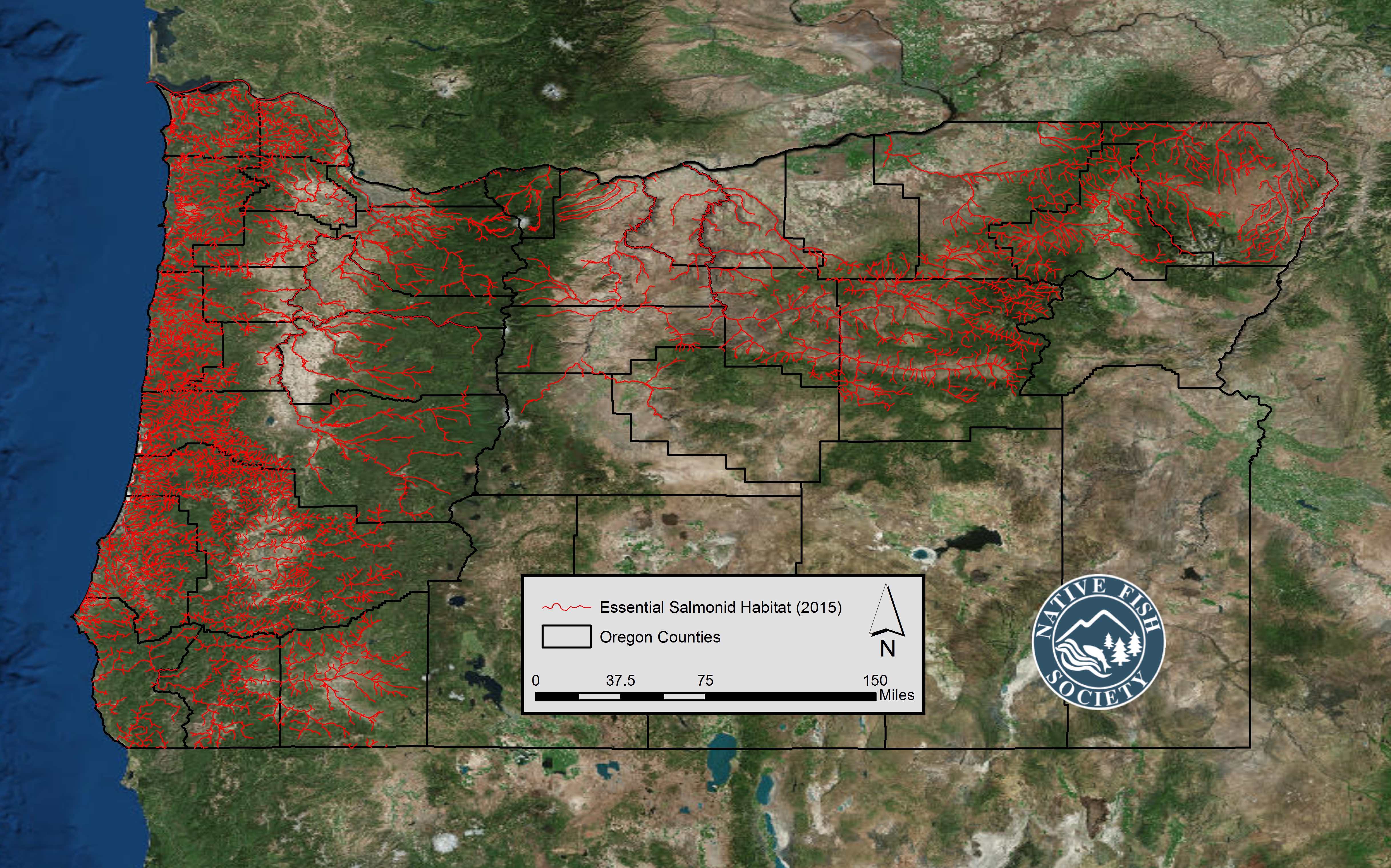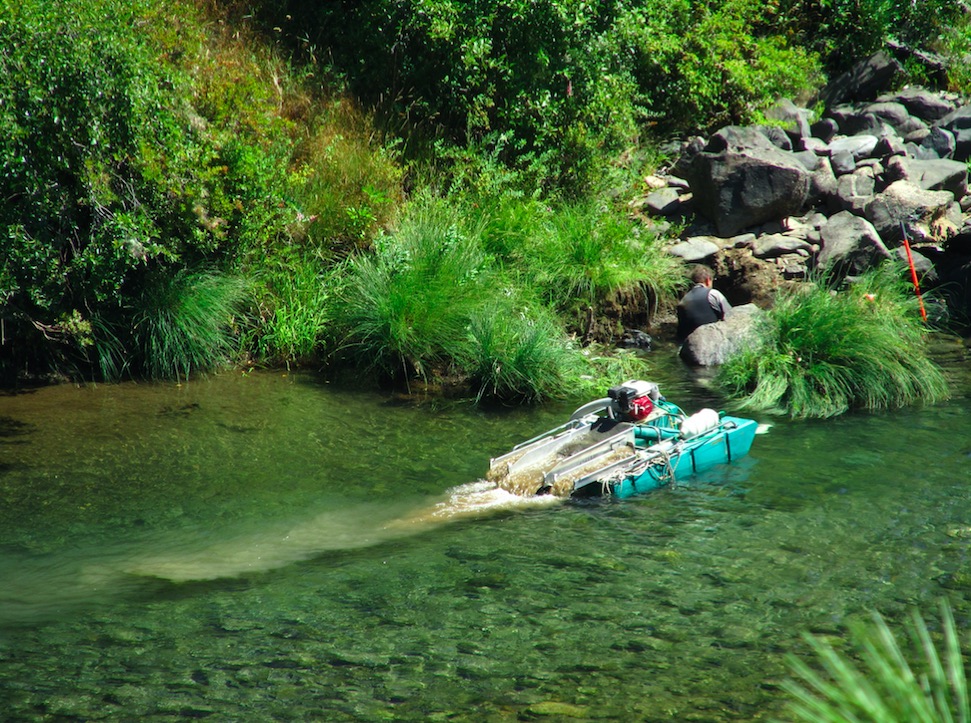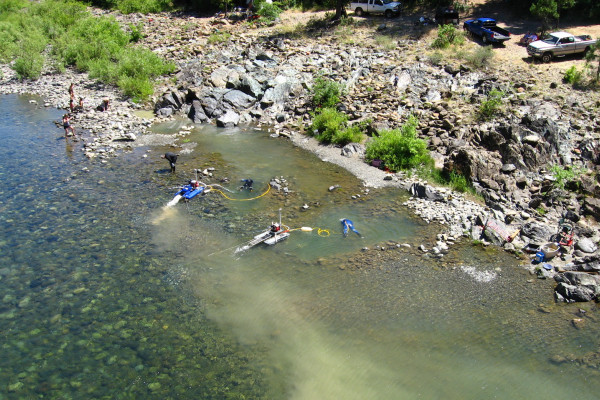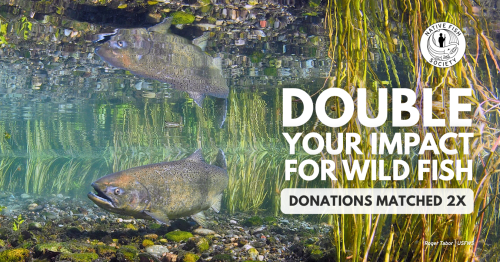Campaign Update
On June 14th, Oregon Governor Kate Brown signed the Suction Dredge Reform Bill (SB 3) legislation which establishes a permanent framework to manage in-stream motorized mining across Oregon. The bill garnered bipartisan support to permanently protect waters listed as essential salmonid habitat from the harmful effects of suction dredge mining, which has been shown to negatively impact fish by vacuuming up river bottoms, trapping and killing aquatic insects, fish eggs and juvenile fish, and negatively altering salmon habitats.
“For the last four years, local communities across Oregon have called for reform on harmful suction dredge mining practices,” said Jake Crawford, Southern Region Manager of the Native Fish Society, “ and this legislation represents a workable, long-term solution to protect the state’s sensitive fish populations.”
The Suction Dredge Reform bill works to protect clean and healthy rivers that support vibrant recreation and the commercial fishing industry. River Steward Charles Gehr notes: “Clean water and healthy salmon define our state and the rivers we love. The recreation industry is a vibrant and sustainable economic model for Oregon and this bill helps protect the streams that are the most vulnerable to suction dredge mining impacts.”
Thank you to everyone who testified in front of the legislature, signed action alerts, and supported our work. With your help Oregon’s sensitive salmon, steelhead, and lamprey received permanent protection from suction dredge mining -- safeguarding over 20,000 stream miles of fish habitat
Over 20,000 stream miles with salmon, steelhead and lamprey now protected from suction dredge mining

The passage of SB 3-A into law is a watershed moment for Oregon in the effort to protect and recover the state’s iconic wild fish, and we’re grateful for the dedication and years of hard work from our grassroots River Stewards, especially South Umpqua Steward Stan Petrowski, Rogue Steward Charles Gehr, and North Santiam River Steward Dave Carpenter who worked with a broad coalition across the state to secure this win for wild fish and clean water.
We would like to extent a special thank you to the legislative champions who helped get this bill over the finish line this session, including Rep. Helm, Rep. Power, Rep. Marsh, Rep. Gorsek, Senate President Courtney and Senator Dembrow, in addition to Governor Brown for signing this bill into law.
Pictured: Rep. Pam Marsh (Ashland) joins several of the southern Oregon coalition members, including South Umpqua Steward Stan Petrowski, Southern Regional Manager Jake Crawford and Rogue Riverkeeper's Robyn Janssen and Stacey Detwiler.
About Suction Dredge Mining
Suction dredge mining is a practice in which miners use a floating, gas-powered vacuum attached to a sluice box to look for gold in rivers and stream channels. The activity involves vacuuming up river bottoms and running the sediment through a mechanized sluice that separates out gold flakes from other rocks and minerals. The sediment is then released back into the river, causing turbid plumes of fine sediment and threatening water quality and sensitive populations of wild, native fish and their habitats.

Photo: Rogue Riverkeeper
This effort is the culmination of work by a diverse coalition of non-profits (including Native Fish Society, Rogue Riverkeeper, Oregon Council of Trout Unlimited, Cascadia Wildlands, WaterWatch of Oregon, Oregon Wild, Center for Biological Diversity and the Oregon Conservation Network), outdoor businesses (Fly Water Travel), land owners, scientists (Oregon Chapter of American Fisheries Society), and recreational and commercial fishermen (Rogue Fly Fishers, Northwest Sportfishing Industry Association).
The negative effects of suction dredge mining have been well documented, in which a multitude of peer-reviewed studies have identified that this practice can trap and kill aquatic insects, fish eggs and juvenile fish, and negatively alter salmon habitats.
Suction dredge miners have removed trees in riparian areas that shade and cool streams and provide critical aquatic habitat. On the South Umpqua River, suction dredge miners illegally removed or altered habitat restoration improvements that were paid for with millions of public tax dollars invested to restore stream complexity and aquatic refugia for species of concern, such as spring Chinook salmon.
In addition, suction dredge mining can stir up legacy deposits of mercury left from historic mining operations, and put rearing juvenile salmon and trout at risk from exposure.iv A 2015 US Fish and Wildlife study reported that “fish metabolic processes are not effective at processing and eliminating methylmercury, and at certain tissue concentrations, methylmercury can negatively impact behavior, health and reproductive success."
This activity has also been identified as a threat to lamprey throughout all their different life stages, from adults, to embryos and ammocoetes, which are particularly sensitive to this harmful activity by being passed through the dredge, destruction of their nests (or redds), and displacement and degradation of their rearing habitats. Furthermore, the different life histories of lamprey can mean that they are present in the river system at different life stages for up to 7 years, and continued disruption of their habitat can have lasting negative effects and be detrimental to these populations.
Literature
1. Harvey and Lisle. 1998. Effects of Suction Dredging on Streams: A review and an evaluation strategy. Fisheries Vol. 23 (8): 9.
2. Horizon Water and Environment (HWE). 2009. Suction Dredge Permitting Program.Literature review on the impacts of suction dredge mining in California.
3. United States Fish and Wildlife Service (USFWS). 2012. Pacific Lamprey Fact Sheet.
4. Marvin-DiPasquale, M., J. Agee, E. Kakouros, L.H. Kieu, J.A. Fleck, and C.N. Alpers. 2011. The Effects of Sediment and Mercury Mobilization in the South Yuba River and Humbug Creek Confluence Area, Nevada County, California: Concentrations, Speciation and Environmental Fate. Part 2: Laboratory Experiments. U.S. Geological Survey Open File Report 2010-1325B
5. Oregon Chapter American Fisheries Society (ORAFS). 2015. “Effects of Suction Dredge Mining on Oregon Fishes and Aquatic Habitat Supplemental Information."
6. National Marine Fisheries Service. 2014. Final Recovery Plan for the Southern Oregon/Northern California Coast Evolutionarily Significant Unit of Coho Salmon (Oncorhynchus kisutch). National Marine Fisheries Service. Arcata, CA.
7. National Marine Fisheries Service (NMFS). 2016. Recovery Plan for Oregon Coast Coho Salmon Evolutionary Significant Unit. National Marine Fisheries Service, West Coast Region.

